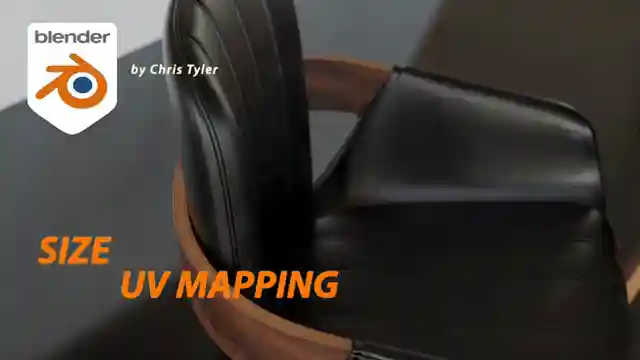Master UV Mapping in Blender: Tips for Precise Texture Application

- Authors
- Published on
- Published on
Today on Christopher 3D, we delve into the intricate world of UV mapping in Blender. The team showcases a unique approach to UV mapping, allowing users to define specific sizes for objects and their corresponding UV maps. By applying a checkerboard pattern to objects, they provide a visual reference for the mapping process. The tutorial emphasizes the importance of maintaining consistent texture application across various objects by focusing on tixel density. This meticulous attention to detail ensures a seamless and professional finish in design projects, akin to fine-tuning a high-performance engine for optimal output.
The guys demonstrate the process of clearing out existing UV maps to start afresh, creating a clean slate for precise mapping. Through the projection of UVs from a reference object, they illustrate how to align views to minimize distortion and achieve accurate mapping results. By strategically pinning points and unwrapping objects, they showcase the art of achieving seamless texture alignment on complex surfaces. Additionally, they shed light on Blender's unique UV mapping modes, offering insights into the software's capabilities and functionalities.
Furthermore, the team navigates the challenges posed by closed objects in UV mapping, showcasing the importance of adding seams for accurate unwrapping. They highlight the significance of symmetry and strategic seam placement in optimizing texture alignment on closed surfaces. With a blend of technical expertise and creative problem-solving, the team at Christopher 3D provides invaluable insights into the intricate world of UV mapping in Blender. Through their detailed demonstrations and practical tips, they empower viewers to elevate their design projects to new heights of precision and professionalism.

Image copyright Youtube

Image copyright Youtube

Image copyright Youtube

Image copyright Youtube
Watch Creating size-specific UV maps for texel density consistency. on Youtube
Viewer Reactions for Creating size-specific UV maps for texel density consistency.
User shares a Python operator solution for consistent texture density in Blender
Positive feedback on the tutorial for explaining things clearly
User appreciates the technique for maintaining consistent texture density
User mentions surprise that Blender lacks texel density control compared to other software like Modo
Frustration expressed about texture mapping in Blender being complicated and time-consuming compared to real-life wrapping scenarios
Related Articles

Master Blender Workflow: Bevel Modifier, Limited Dissolve & Object Changes
Discover workflow efficiency tips in Blender! Learn about using the bevel modifier for angled edges, limited dissolve for bezier curves, and applying changes to multiple objects simultaneously. Master 3D modeling tricks for seamless design.

Mastering Direct Polygon Modeling: Retro Camera Tutorial
Discover the power of direct polygon modeling vs. subdivision surfaces in mechanical modeling with Christopher 3D. Learn how to import Adobe Illustrator profiles into Blender, tackle tessellation challenges, and master precision modeling techniques to create a stunning retro camera model.

Mastering UV Mapping for Design Precision
Learn how Christopher 3D's UV mapping technique establishes precise physical sizes for design work, ensuring uniform texel density and accurate printing outcomes.

Master UV Mapping in Blender: Tips for Precise Texture Application
Learn UV mapping in Blender with Christopher 3D: establish object sizes, apply checkerboard patterns, maintain texture consistency, project UVs, add seams for closed objects. Master precise mapping for professional design projects.
